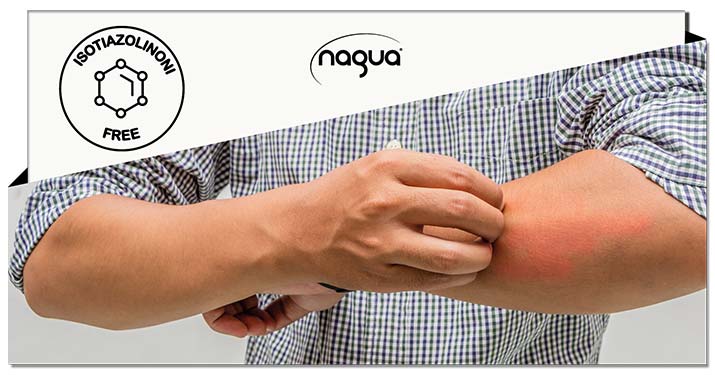eco productspreservative-free
What is Isothiazolinone?
It is a type of preservative widely used in detergents and personal care products. Knowing how to recognize them is very important because some of them, such as Propylparaben and Butylparaben, have an estrogen-similar action.
Although many labels state "paraben-free," many products contain preservatives such as MIT (Methylisothiazolinone), a preservative used as a substitute for parabens.

In addition, following the observation of an increase in the number of allergic reactions to MIT (methylisothiazolinone), the European Commission's Scientific Committee on Cosmetic Product Safety (SCCS) has issued a series of recommendations to discontinue the use of MIT in no-rinse products, including wet wipes and cosmetics.
Products that may contain preservatives
Today we can find preservatives in products with water-based preparation, such as cosmetics, detergents, cleaning products, dyes and adhesives.
Impact on health
First of all, it is good to remember that these substances are sensitizing and can cause allergic contact dermatitis. Allergic reaction may appear between 24 and 96 hours after exposure to the products.
What are the symptoms? Itching, erythema, or blistering on the surface of the skin that came in contact with the used substance or was exposed to its vapors.
In fact, isothiazolinones are volatile substances and the vapors they release can trigger skin reactions.
Environmental impact
Being extremely toxic, they are harmful to all natural environments and the animals that inhabit them.
Preservatives in Europe
Maximum concentration allowed into cosmetics:
- In rinse-off products: 0.0015% when used alone, 0.0015% total with CMIT (methylchloroisothiazolinone) in a 3/1:3 MIT to 1 CMIT ratio.
- The use is prohibited in products without rinsing
Studies & Sources
Regulation (EU) no. 1003/2014 of the European Commission of September 18, 2014.